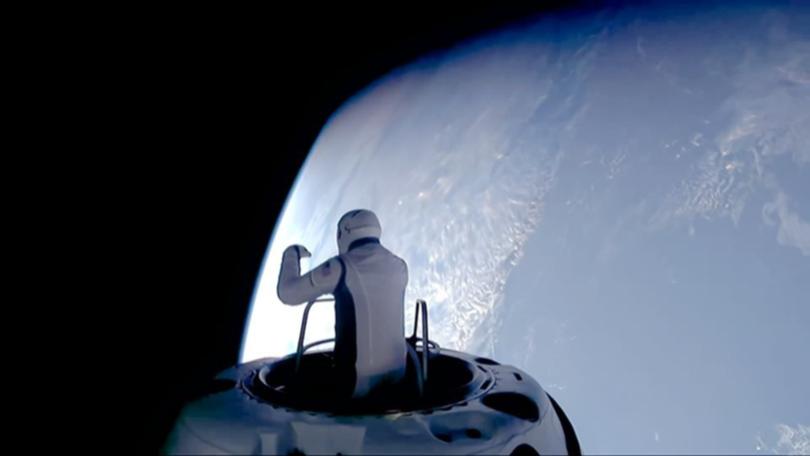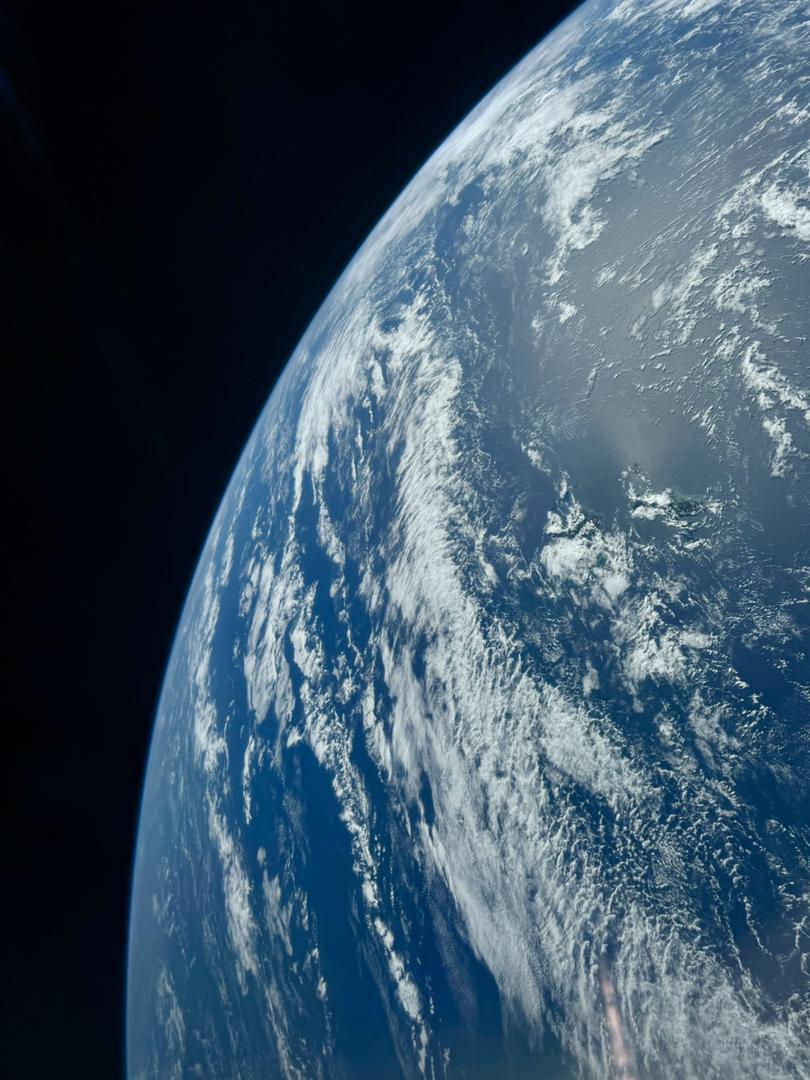Tech billionaire completes first private spacewalk

Two astronauts - a billionaire and an engineer - have completed the first private spacewalk in orbit outside a SpaceX capsule, wearing a new line of spacesuits in a risky feat previously exclusive to astronauts from government space programs.
The astronauts on the Polaris Dawn mission went one at a time, each spending about 10 minutes outside the gumdrop-shaped Crew Dragon capsule on a tether, as Elon Musk’s company again succeeded in pushing the boundaries of commercial spaceflight.
Jared Isaacman, a pilot and the founder of electronic payments company Shift4, exited first and was followed by SpaceX engineer Sarah Gillis while crewmates Scott Poteet and Anna Menon watched from inside.
Sign up to The Nightly's newsletters.
Get the first look at the digital newspaper, curated daily stories and breaking headlines delivered to your inbox.
By continuing you agree to our Terms and Privacy Policy.The whole process, unfolding about 730km above Earth, lasted an hour and 46 minutes.
The four astronauts have been orbiting earth since Tuesday’s launch from Florida.
Mr Isaacman is bankrolling the Polaris mission, as he did his Inspiration4 flight with SpaceX in 2021.
Streamed live on SpaceX’s website, the mission tested trailblazing equipment including slim spacesuits and a process to fully depressurise the Crew Dragon cabin - technology that Mr Musk hopes to advance for ambitious future private missions to Mars.
“Back at home we all have a lot of work to do. But from here, earth sure looks like a perfect world,” Isaacman said after emerging from the spacecraft, silhouetted with the half-lit planet glittering below.

It was one of the riskiest missions yet for SpaceX, the only private company that has proven to be capable of routinely sending people to and from earth’s orbit.
Before the spacewalk began, the capsule was completely depressurised, with the astronauts relying on their SpaceX-developed spacesuits for oxygen, provided through an umbilical connection to Crew Dragon.
Mr Isaacman, 41, and Ms Gillis, 30, rose from Crew Dragon’s hatch door into space to test various body movements in the suit, voicing feedback to ground control to inform future design iterations.
Their posture appeared stiff as they were able to move their arms at the elbow and shoulder but less so at the waist, back and neck.
The mission tested the spacesuit design and procedures for the capsule, among other things, in a mission meant to find the limits of what private companies can do in orbit.
Ground teams at SpaceX’s Hawthorne, California, headquarters watched as the capsule’s hatch door sealed shut and carried out leak checks as the astronauts returned to their cabin seats.
The first US spacewalk in 1965, aboard a Gemini capsule, used a similar procedure to the one used on Thursday: the capsule was depressurised, the hatch opened and a space suited astronaut ventured outside on a tether.
NASA administrator Bill Nelson, whose agency helped fund Crew Dragon development beginning roughly a decade ago, lauded Thursday’s accomplishment.
“Today’s success represents a giant leap forward for the commercial space industry and NASA’s long-term goal to build a vibrant US space economy,” Nelson wrote on social media.
Mr Isaacman has declined to say how much he is paying but his missions are likely to cost hundreds of millions of dollars, based on Crew Dragon’s price of roughly $US55 million ($A82 million) a seat for other flights.
Ms Gillis started at SpaceX as an intern in 2015.
Mr Poteet, 50, is a retired US air force lieutenant colonel.
Ms Menon, 38, is a SpaceX engineer.
Throughout Wednesday, the craft circled earth at least six times in an oval-shaped orbit as shallow as 190km and stretching out as far as 1400km, the farthest in space that humans have travelled since the last US Apollo mission to the moon in 1972.
Only government astronauts with several years of training have conducted spacewalks in the past.
There have been about 270 on the International Space Station since it was set up in 2000, and 16 by Chinese astronauts on China’s Tiangong space station.
A record 19 astronauts are currently in orbit, after Russia’s Soyuz MS-26 mission ferried two cosmonauts and a US astronaut to the International Space Station on Wednesday, taking its headcount to 12.
Three Chinese astronauts are aboard the Tiangong space station.
